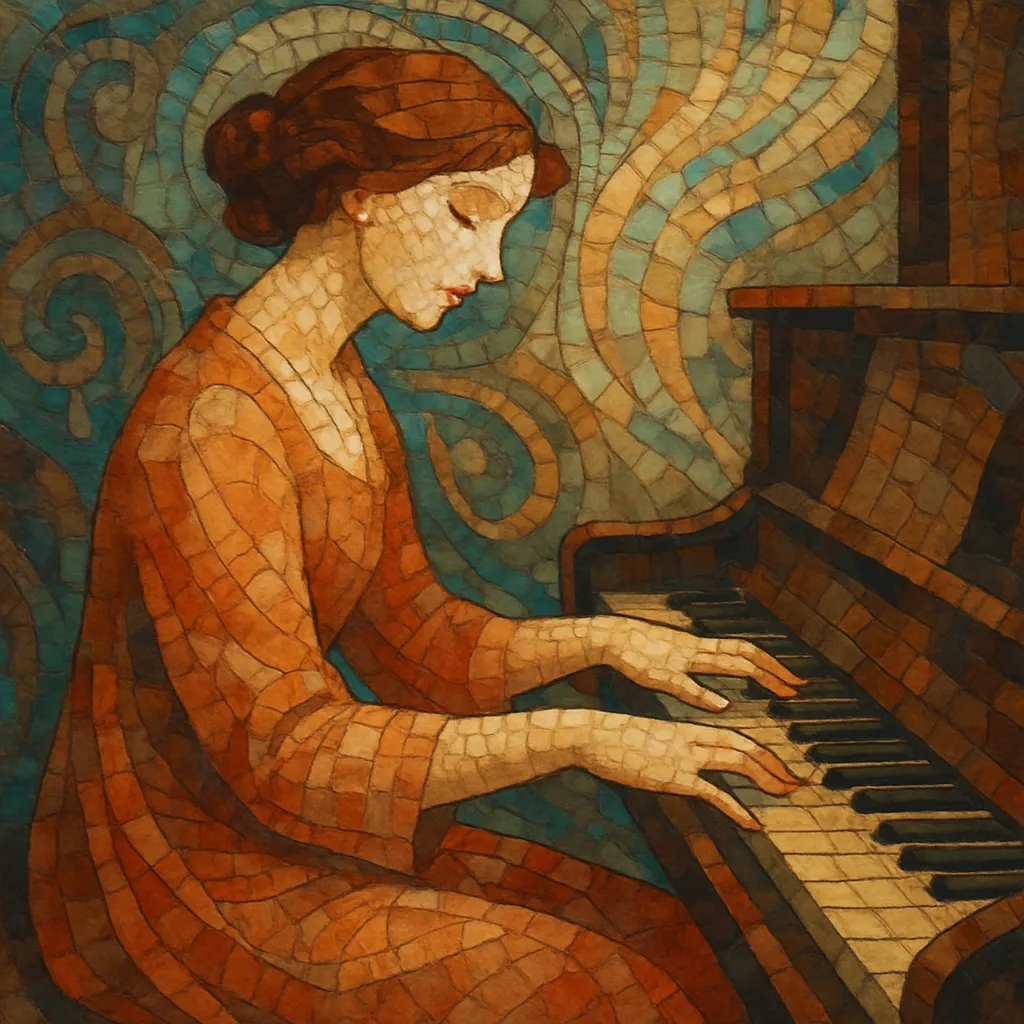A character piece (German: Charakterstück) is a short, single-movement work—most often for solo piano—designed to evoke a specific mood, scene, or persona.
Typically lasting one to five minutes, it prioritizes vivid expression and atmosphere over large-scale form. Titles are often descriptive (e.g., Nocturne, Impromptu, Romance, Intermezzo, Barcarolle), guiding the listener’s imagination.
Musically, character pieces favor singable melodies, rich but economical harmony, clear textures, and flexible tempo (rubato). Common plans include ternary (ABA) or through-composed designs, with coloristic pedaling and nuanced dynamic shaping to paint the intended character.
While the piano repertory dominates, the aesthetic extends to other instruments and small ensembles, and it remains central in pedagogy and concert encores.
Short expressive keyboard miniatures grew from late-Classical salon culture and Beethoven’s Bagatelles (a precedent for intimate, self-contained pieces). John Field’s early 19th-century Nocturnes modeled a lyrical, mood-driven piano idiom that fed directly into the Romantic imagination. These practices set the stage for the explicitly titled, affect-centered character piece.
Schubert’s Impromptus (1827) crystallized the genre’s concentrated expressive form, while Mendelssohn’s Songs Without Words (from 1829) popularized song-like piano narratives without text. Chopin broadened the palette with nocturnes, preludes, waltzes, mazurkas, and berceuses—each a distilled mood rendered in pianistic color and rubato. Schumann’s cycles (Papillons, Carnaval, Kinderszenen) turned sequences of character pieces into narrative albums. Liszt’s poetic miniatures (Consolations, Album leaves) added virtuosity and programmatic nuance.
Brahms’s Intermezzi epitomized introspective, autumnal character writing. Grieg’s Lyric Pieces married folk inflection with intimate expression, and Tchaikovsky’s Album for the Young showed the genre’s pedagogical and domestic reach. Debussy’s Préludes and Satie’s miniatures (Gymnopédies, Gnossiennes) updated the genre’s harmonic language and timbral subtlety, while Scriabin’s preludes and poèmes intensified chromaticism and mysticism.
The character piece’s emphasis on mood painting, concise form, and evocative titles influenced impressionism and beyond, feeding programmatic ideals that also surfaced in larger forms. It remains a cornerstone of piano teaching and recital repertoire, prized for storytelling through concentrated musical means.


